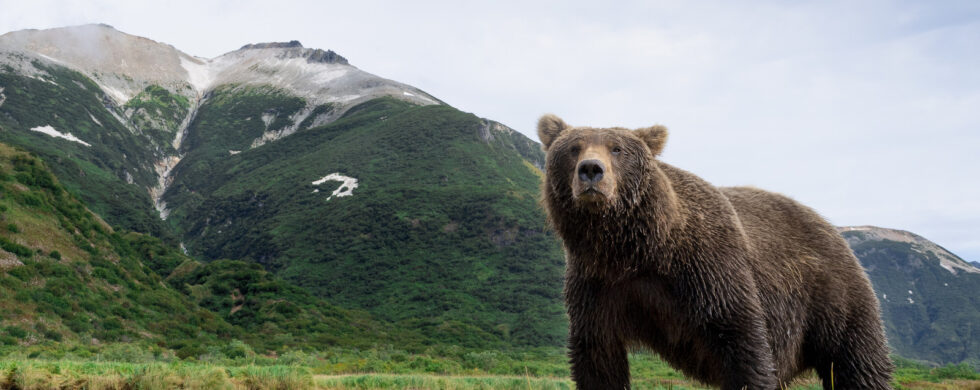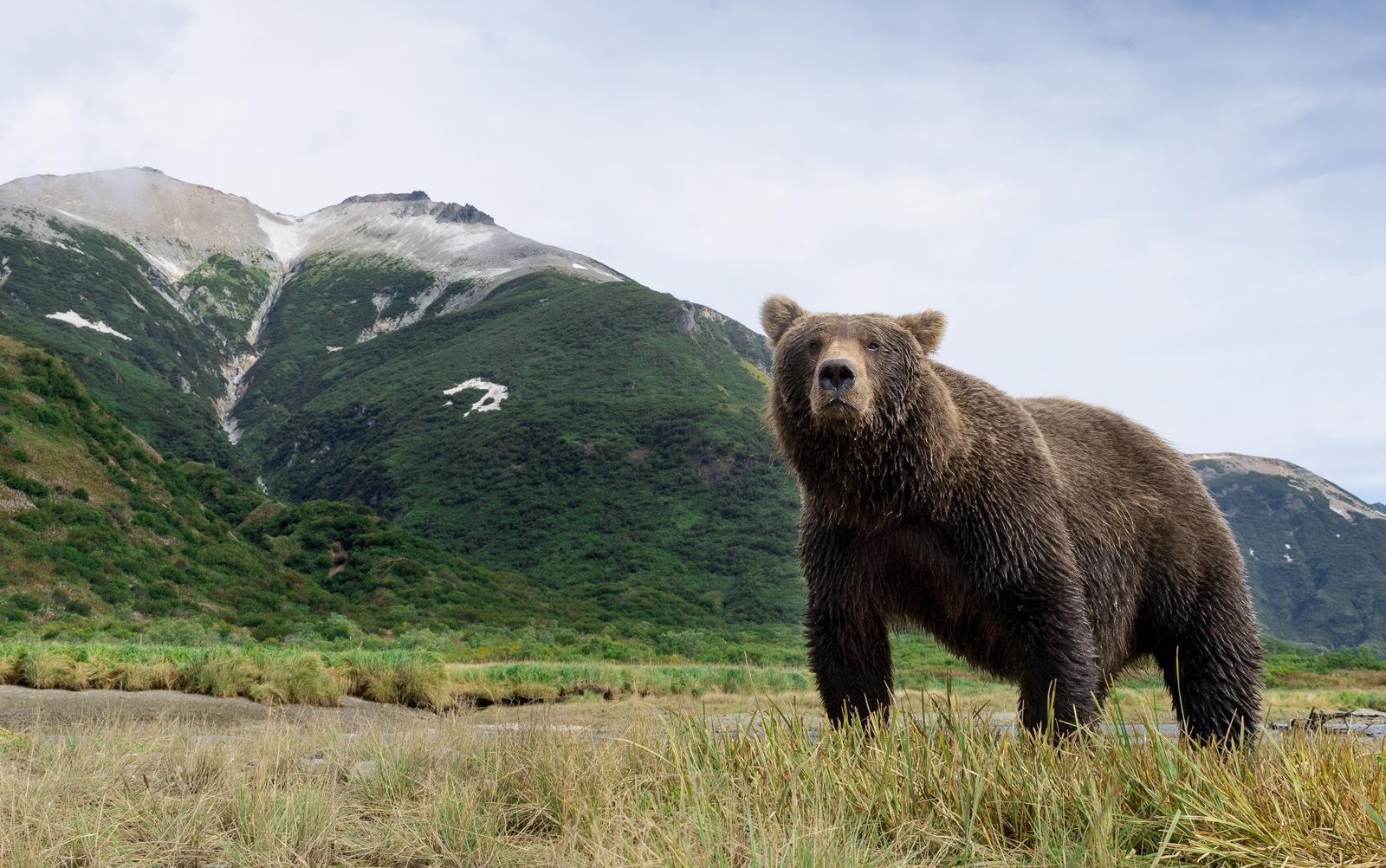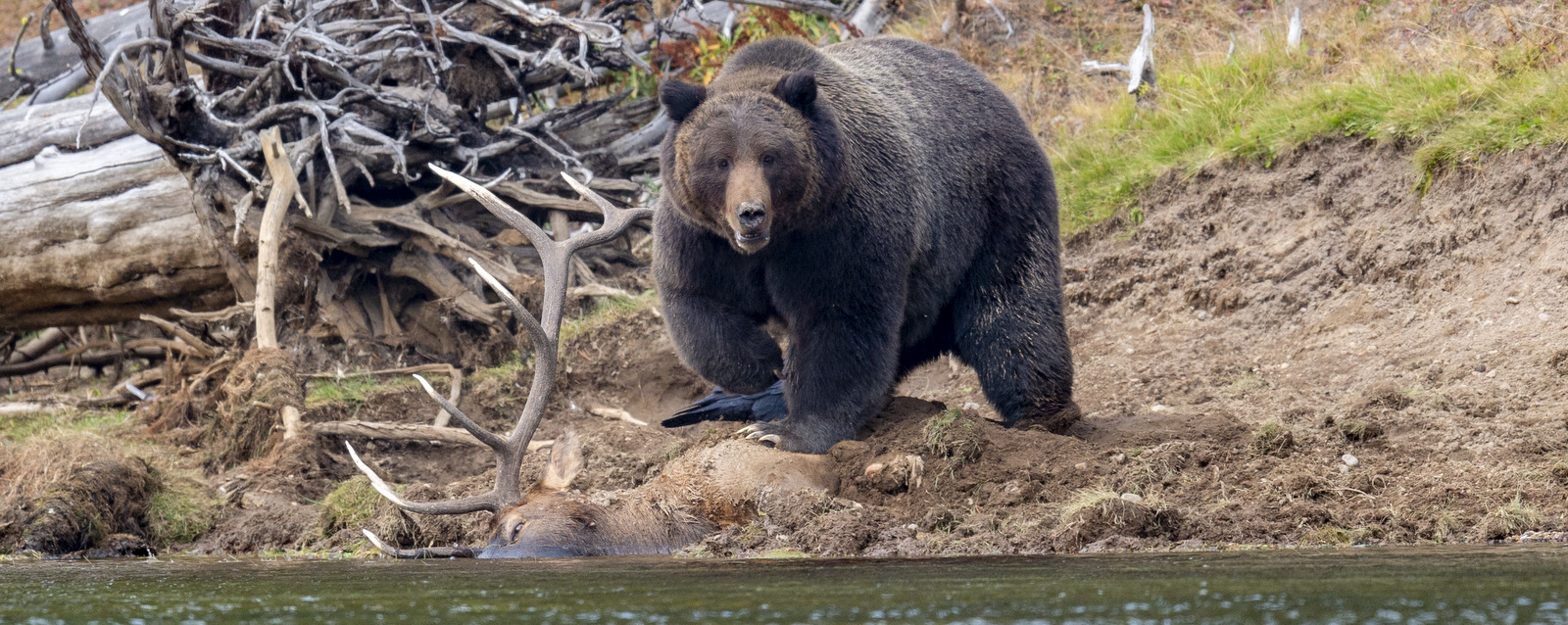
31
2022Brown Bear?
Shot of the Month – October 2022
Whoa, that is a BIG bear. Is it a Grizzly Bear? Or perhaps a Brown Bear?
Seems like a simple enough question, but as I have learned over the years, the classification or naming of critters can be a very, very messy affair.
First, let’s start with “What is a Brown Bear?”
The Brown Bear species (Ursus arctos) is the most widely distributed bear across the globe. They can be found in many countries throughout Europe and Central Asia, China, Canada, and the United States. There are approximately 200,000 brown bears in the world; with Russia having the largest population at 120,000 bears. North America is home to about 55,000 brown bears; wherein Western Canada has roughly 25,000 bears, while the United States has about 30,000. Most of the U.S. brown bears live in Alaska (about 98%) with a small population found in Montana, Idaho, Wyoming, and Washington. (source)
Next, “What is a Grizzly Bear?”
Grizzly bears are only found in North America and many feel that they are simply brown bears. Some say that they are a sub-species of Brown Bear. Others say they are a separate clade. Yeah, let’s not go down this rabbit hole or we may lose our minds…
In common usage, meaning not using any fancy Latin words, most folks go with this explanation:
The grizzly bear is a kind of brown bear. Many people in North America use the common name “grizzly bear” to refer to the smaller and lighter-colored bear that occurs in interior areas and the term “brown bear” to refer to the larger and typically darker-colored bear in coastal areas.
Did you catch that terrifying nuance? Grizzly bears, as huge as they are, tend to be the SMALLER version of brown bears. Why is that you may wonder? Brown bears, given the “definition” above, tend to live along the coast and therefore have access to salmon which provide a tremendous calorie boost to their diet, allowing them to grow to massive proportions. Have you heard of the Fat Bear Contest (check out this video)? Yeah, those are Brown Bears, who are all getting fat on salmon. Alaskan Brown Bears, like the female I photographed in Katmai NP above, can eat 80-90 pounds of food/day gaining 3-6 pounds of fat each day in preparation for hibernation.
So grizzly bears are just North American brown bears that are found in forests, interior landscapes, and other places where one cannot dine on salmon. Below is one of those “small” grizzlies that I photographed (read more about that here) in Yellowstone NP a few years ago:
Male grizzlies tend to max out around 400 pounds (females at around 250 pounds) while brown bears can reach double that size. Take all this weight talk with a grain of salt as brown bear/grizzly bear size and weight can vary dramatically depending on location/climate/diet/genetics. The Yellowstone grizzly that killed the elk in the image above, Grizzly 791, is one of the biggest seen in the park and weighs about 600 pounds so he obviously did not get the memo about being smaller.
And where does one find the biggest brown bears? That would be on Kodiak Island in Alaska. The Kodiak bear is a recognized sub-species of brown as they have been isolated from other bears for about 12,000 years – since the last ice age. Those bruisers can reach 1,700 pounds. Yelp.
So if you managed to follow all that, we can say, for the most part, that all grizzly bears are brown bears, but not all brown bears are grizzly bears. And for their size, all we can say is that brown bears and grizzlies are always big. And sometimes really big. And other times, terrifyingly big.
And I didn’t even get into the fact that “Brown” bears are only sometimes brown in color (can vary from almost white to dark tan and everything in between)…..but, my head hurts, so let’s save that for another day.
Until next month….m
Sources
Brown Bear (National Geographic)
Brown Bear (Alaska Fish and Game)
Nikon D5, Nikon 24-120mm (@ 32mm), f/11, 1/350 sec, ISO 360, +0.333 EV



Sherry Lawson
Thanks for the interesting lesson on identification of these bears!